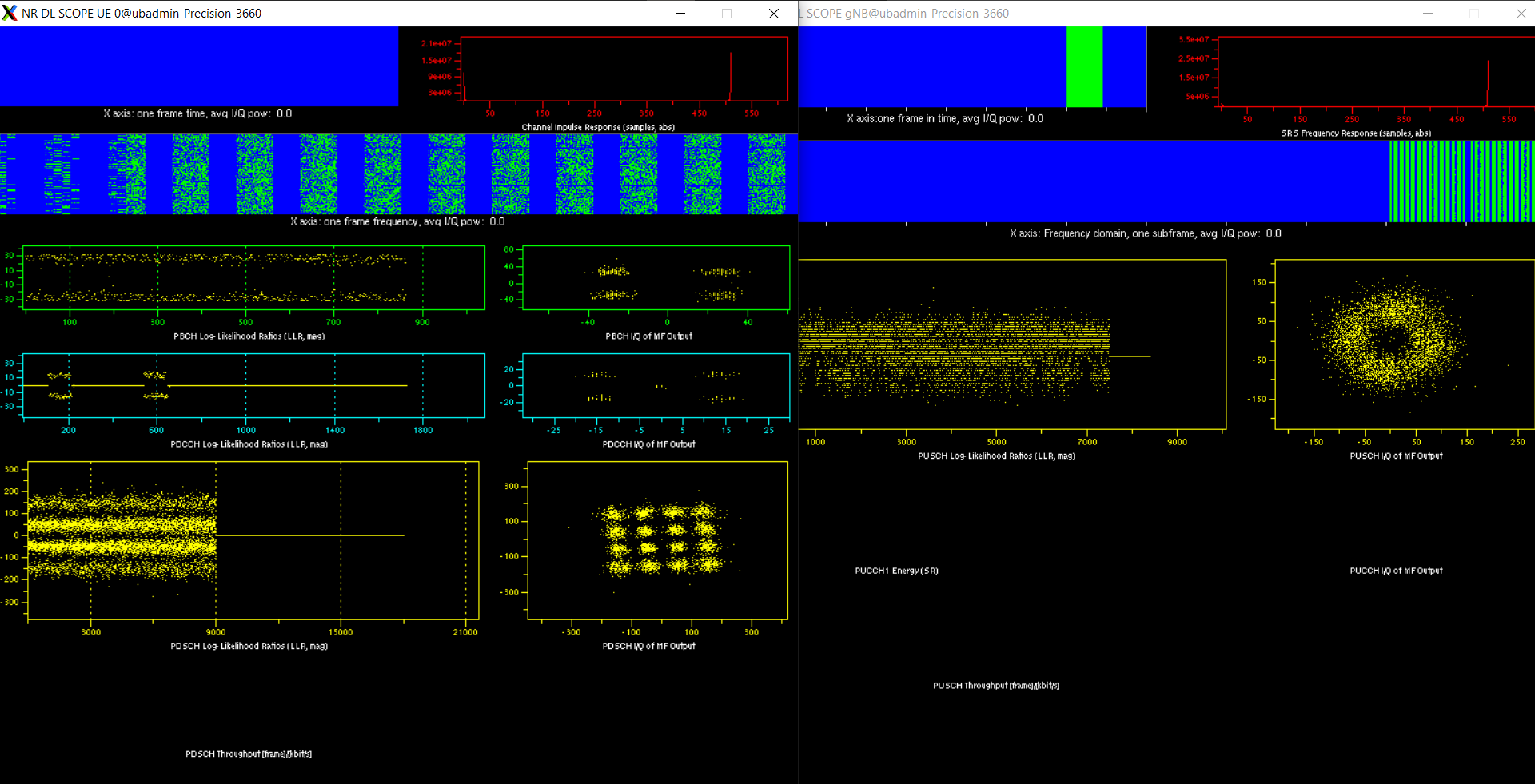¶ NTN Over-The-Satellite

¶ Description
-
5G is the fifth generation of mobile networks, which promises to provide higher data rates, lower latency, and more reliable connectivity for various applications. Satellite communications can be classified into different types based on the orbit altitude of the satellites, such as:
- Geostationary orbit (GEO) - Medium earth orbit (MEO) - Low earth orbit (LEO)Each type has its own advantages and disadvantages in terms of latency, bandwidth, availability, and cost. Among them, GEO satellites have the highest orbit altitude (about 36,000 km), which results in high latency (about 250 ms) but also high bandwidth (up to several Gbps) and constant coverage (a single satellite can cover about one-third of the earth’s surface).
-
In this project, we aim to test the feasibility and performance of 5G connectivity over GEO satellites. We use a software-defined radio (SDR) platform and an open-source 5G software stack to establish the 5G radio access network (RAN) over the satellite GEO channel. We measure the key performance indicators (KPIs) of 5G over GEO, such as throughput, latency, jitter, and packet loss. We also compare the results with those of terrestrial 5G networks and analyze the impact of satellite channel characteristics on 5G performance.
¶ Hardware and Software Setup
¶ Components
USRP X310
An SDR device that can transmit and receive radio signals from DC to 6 GHz with up to 200 MS/s sampling rate. It has a large user-programmable FPGA for custom signal processing algorithms. Two USRP X310 devices are used, one as the base station (gNB) and one as the user equipment (UE).OpenAirInterface
An open-source software project implementing 3GPP specifications for 4G and 5G RAN and core network. Supports various SDR platforms, including USRP devices. A modified version is used for communication over GEO satellites.GEO Satellite
The satellite link over SES GEO satellites provides the infrastructure for bidirectional communications between the gNB and the UE.¶ Experiment
¶ Steps
1. Software Initialization
Run the OpenAirInterface software on the host computer and start the gNB and UE processes. Monitor the status of the gNB and UE on the terminal windows and check if they are synchronized and connected over the satellite link.2. Adjustments
Adjust the timing advance and carrier frequency offset (CFO) values on the gNB and UE sides to compensate for the propagation delay and frequency drifts caused by the satellite channel.3. Optimization
Change the modulation and coding scheme (MCS) on the gNB and UE sides to match the available signal-to-noise ratio (SNR) of the satellite channel. This will optimize the spectral efficiency and error performance of 5G over GEO.4. Network Applications
Run network applications on the UE side, such as ping, iperf, or web browsing, and measure the KPIs of 5G over GEO, such as throughput, latency, jitter, and packet loss.5. Test ARQ and HARQ Functionality
Test re-transmissions of erroneous data blocks using ARQ or HARQ protocols. Measure the number of re-transmissions, error rates, and throughput.¶ Results
We successfully synchronized and connected the gNB and UE over the GEO satellite channel. We achieved the MCS 17 in the downlink, which corresponds to 64-QAM modulation and rate 3/4 convolutional coding. This means that we can transmit 6 bits per symbol and have a coding rate of 0.75, which results in a high spectral efficiency and error performance.

We performed a preliminary ping test to measure the latency and packet loss of 5G over GEO. We configured the RLC layer UM mode, which is used for data transfer without error correction or re-transmission. We sent 1000 packets of 64 bytes each from the UE to the gNB and received the following statistics:
- 1000 packets transmitted, 998 received, 0.2% packet loss, time 16788 ms
- rtt min/avg/max/mdev = 528.650/530.356/649.696/8.669 ms, pipe 46
- ipg/ewma 16.804/532.443 ms
The results show that the latency is high (about 530 ms on average) due to the long propagation delay of the satellite channel (about 250 ms one way). The packet loss is low (0.2%) due to the effective FEC coding and ARQ/HARQ protocols. The pipe size is 46, which means that there are 46 packets in flight at any given time. The ipg is the inter-packet gap, which is the time interval between two consecutive packets sent by the UE. The ewma is the exponentially weighted moving average of the ipg, which reflects the variation of the ipg over time.
We also tested some TCP/IP services over 5G over GEO, such as video streaming and file transfer. We found that these services can operate well despite the high latency and low packet loss of the satellite channel. We still have to test the RLC layer AM mode, which is used for data transfer with error correction and re-transmission. This mode requires ACK/NACK from the other party and large data buffers, which can further increase the delay.
Further, we can use some techniques to improve the TCP performance over GEO, such as increasing the window size, using selective acknowledgments, and using fast re-transmit and fast recovery algorithms. We can also use some adaptive video streaming protocols, such as MPEG-DASH and HLS, which can adjust the video quality according to the available bandwidth and network conditions.
¶ Related Topics
- Software Defined Radios (SDRs) - More info about SDRs
- OpenAirInterface 5G - Details on OpenAirInterface 5G
- Open5Gs - Learn about Open5Gs
- RANs (Radio Access Networks) - Discover more about RANs
¶ Related Web Links
- Demonstration Video on LinkedIn - Watch our LinkedIn demonstration
- OAI goa-5g-ntn Repository - Visit the OAI repository
- SES S.A. Website - Explore the SES S.A. Website
- OpenAirInterface Overview - Overview of OpenAirInterface
- Ettus USRP X310 Product Page - Details on Ettus USRP X310
- Harq and ARQ Explained - Explanation of Harq and ARQ